We are now rounding out the fourth month of the Covid-19 pandemic, a worldwide catastrophe that, as of now, shows no signs of fully abating, especially in the United States and a few other countries that have been slow to realize the serious need of playing it safe. How does this affect artists? More time in the studio can be a good thing, but the general zeitgeist of fear and sadness can also creep into the work. A lucky few, like Bonnie Cutts, are trying to put the best spin possible on the situation. ”I am visiting neighbors, fashioning communities, and moving through a devastating time and space,” she writes. “It’s an unintended consequence of the pandemic: an energized body of work borne from looking forward to a day when we are all together again, inside and outside.” I had hoped this would be the last installment of this post, but now I’m not so sure….
Annie Coe: Since I am a hermit by nature, not a lot has changed, except color is sneaking back into my work. I think it is a response to the doom and gloom of this virus, though it is not at all a deliberate decision. About a year ago I started doing textiles, and slow stitching has been a comforting activity during this time; it keeps me from worry and makes me very happy. These two new works are from my recent “Shield” series, which represent a kind of metaphorical armor against the pandemic.
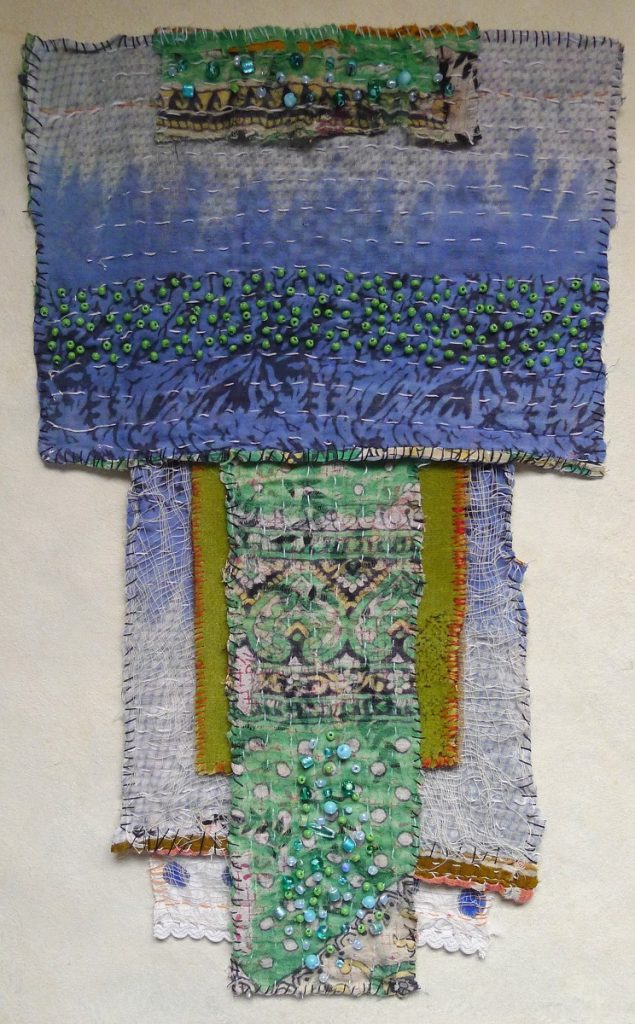
Annie Coe, Improvised Movements (2020), from the “Shield” series, cotton, cheese cloth, velvet fabric, India ink, beads and thread, 18 by 10.5 inches.
Karen Nielsen-Fried: In mid-April, after having been in lockdown for over a month, I was longing for studio visits, those lovely gatherings of a few artist friends, a few bottles of wine (pals, you know who you are!), and good talks about art and life. In the process of noodling around with a new work on paper, I found myself painting a portrait-ish sort of image. I haven’t done figurative work or portraiture since my early college days, many years ago, so it was rather surprising. There were no facial features on this “portrait,” but a mask was definitely there. It seemed that a visitor had shown up, and thus began a whole series of “Studio Visitors” or “Welcome Strangers” (16 of them at this point). Each one came out of a process of just beginning to paint in order to see what came up. Unplanned initially, each one arose from a search to figure out who or why or what they would become. They all are masked in some way because, well, Covid-19. It’s been interesting being surrounded by all of them in the studio, arranging them in groupings to see how they communicate with each other, each from their different world.

Three “Studio Visitors” (Brilliant Girl, Thora, and Little One). Acrylic and flashe on watercolor paper, 30 by 22 inches
Ellen Soffer: I have been up and down during the pandemic. Some weeks I was painting more, others less. I’ve started a few new smaller paintings and works on paper. Being in the studio during the first few weeks was a great relief because of being separated from the news for a few hours. Some days it is harder to concentrate but mostly I have found it a place to feel like myself again.
Christina Saj: Like much of the country, and certainly all of us in the New York metro area, I am trying to find a comfort zone within the Covid-19 quarantine restrictions. Artists naturally self-isolate to do their work, so this comes perhaps more naturally to us than to most. However, we all find ourselves feeling constantly under siege in an ever-changing landscape of information. I am lucky to have a studio at home, so I am able to dive deep and channel anxieties into the work. A week into sheltering in place I experienced a tidal wave of creative energy which has erupted into a prolific and evolving series of more than 70 pieces. This current work explores feelings and images surrounding the pandemic, images inspired by microbiology as well thoughts about hope, natural beauty and finding solace. The pieces were born out of mandalas, which are often employed to aid mediation and provide sacred space. Using these round forms as the beginning, I share my personal reflections and explore our current physical, mental, emotional and spiritual states of being. The geometries represent the cosmos and a model for the structure of life itself. The pieces are both painterly and structured. I take comfort in the fact that it is said that creating mandalas helps stabilize and re-order one’s inner life. We are all witnessing how the daily threat changes our behaviors and affects us both practically and emotionally.
Ellen Weider: I’ve continued to be very productive during the pandemic. I tap into my inner world, as usual, and feel especially lucky to have this respite from “reality” now. My paintings have a Zen quality, with whimsical and poetic aspects. Sometimes current events creep in, but positivity and optimism remain.
Carlos Ramirez:This has been a challenging time in my life as I know it has been for all. Having grown up in the tropics, I see that the crisis made me think of life during a hurricane. Sheltering in place and taking refuge during this “storm” became my new reality. This solitude allowed me the mental space to grow, to use this unstructured time productively, to further develop my work. Each day begins when I walk into the studio. This light, airy, serene space is a refuge from the chaos of the world and a conduit to finding solitude. My work is my journey and I lose myself to the process. In a quasi-meditative state, time and the world around me seem to disappear until it is just me and the canvas.
Candace Compton Pappas: My work has been exploring a prevailing sense of unraveling for some time. Between climate change, the tragic display of social inequity surfacing during Covid-19, and ongoing racial violence, this unraveling goes deep—culturally, environmentally, personally. In the midst of decaying structures, imminent collapse, and slow-motion change, I aim for some kind of balance. As dismal as it all seems, I look for and relish that moment of absolute stillness before the fall, specifically in my work, creating imagery, totems, assemblage, all built to teeter and tumble. The bird piece is an older work I went back to rework. The cedar trunks I collect from our woods as we slowly remove invasive species. I just keep asking myself, where do you land when the house is on fire?

On Edge (2020), two cedar trunks, 40 by 24 by 24 inches and (right) Landing (2020), acrylic, oil and inks on panel, 24 by 24 inches
Bonnie Cutts: “We Are All in This Together” is an ongoing body of work I am producing in response to the current pandemic and the shelter-in-place directions. We are home—or at least told to stay home—and so the house image factors heavily. Doors and windows are shut; we are told to keep our distance from one another. As the days and weeks have gone by and I have continued to paint houses, though, I have come to realize I am creating community with the housing motif: a community of people and neighborhoods I am missing. Perhaps it is my way of seeing what is going on in these spaces; feeling the life in the homes I can’t visit. Today, these images bring me a sense of comfort. I am visiting neighbors, fashioning communities, and moving through a devastating time and space. It’s an unintended consequence of the pandemic: an energized body of work borne from looking forward to a day when we are all together again, inside and outside.
Eileen Hoffman: I made The Stories Will Be Told for the Prayers for the Pandemic project sponsored by the Drawing Rooms in Jersey City, NJ. It is placed on the fence overlooking the ballfields in Prospect Park, Brooklyn. Each year the fields—usually filled with baseball, football, and soccer players—are closed during the winter to reseed the grass. Because of the coronavirus, they were not opened this year and remain empty (save for a few players who sneak onto the fields to practice). My son is an aspiring college baseball player, so I am particularly sensitive to the interruption the pandemic has brought to athletes’ lives. I want to send prayers to all the athletes who have had their dreams interrupted this year. I see this as a metaphor for all of us who have had our lives put on hold. I want us to remember our significance and appreciate all the ways we have not let the pandemic stop us. We continue to find ways to live, work, and grow. The prayer-flag patterns are painted on clear Dura-Lar with acrylic paint. The writing is taken from current newspaper headlines. I want the delicacy, transparency, and vibrancy of the painting to reflect the breadth of our experiences and to send out messages of strength and hope.
Karin Batten: My solo show at June Kelly Gallery closed after 10 days because of the lockdown of NYC. It has been up all this time and we don’t know when the gallery will open again. I was in shock and afraid of getting the virus. And having terrible dreams about not washing my hands and being infected and dying. I couldn’t do anything. After weeks of so much uncertainty I finally decided, enough is enough. “Get back to work and do artwork. It always helps.” I explored this state of mind and how great it felt to be working again.
Mimi Graminski: My teaching gigs have mostly dried up, and I had to move out of my studio this spring because of a leaky roof. Despite those setbacks and the pandemic, I have been able to continue on existing projects and begin new ones. In the Northeast we had some intense spring storms, which led to trees falling near our house. As a result we had to clean up the fallen trees and take others down (and I had to move out of my studio). The cut trees were in piles and rows all over, which inspired me to create this new work. It is connected to other stencil work I began in the fall of 2019, and the abundance of logs enabled me to make larger-scale pieces. These photographs will be in the inaugural show of the Hammond Museum’s virtual exhibition series. I am also happy to be included in the virtual exhibition at the Dorsky Museum, “Stay Home, Make Art.”
Fran Beallor: When I started my “Self-Portrait-a-Day-2020” series, I had no idea what I would be in for in this time of global pandemic and social distancing. This is the fourth time I am doing a year of daily self-portraits (the earlier series were done in 1980, 2000 and 2010). My feelings, observations, and realizations are all coming through loud and clear in the works. These four, out of the 140-plus drawings I have made so far, were done as I began to realize that we would not be able to continue our lives as they were before. Series began to emerge within my series: the “Box” series about feeling trapped, constrained and boxed in (plus reflecting on how boxes have become a lifeline to the outside world); the “Expressions” series, exploring my feelings but also reflecting on the feelings of those around me, as I cycle through anger, sadness, disbelief, fear, denial and acceptance; the “Shadow” series, about our effect on the world and on each other; and of course the “Mask” series, addressing the need to hide our faces, and thinking about the many ways we do that.
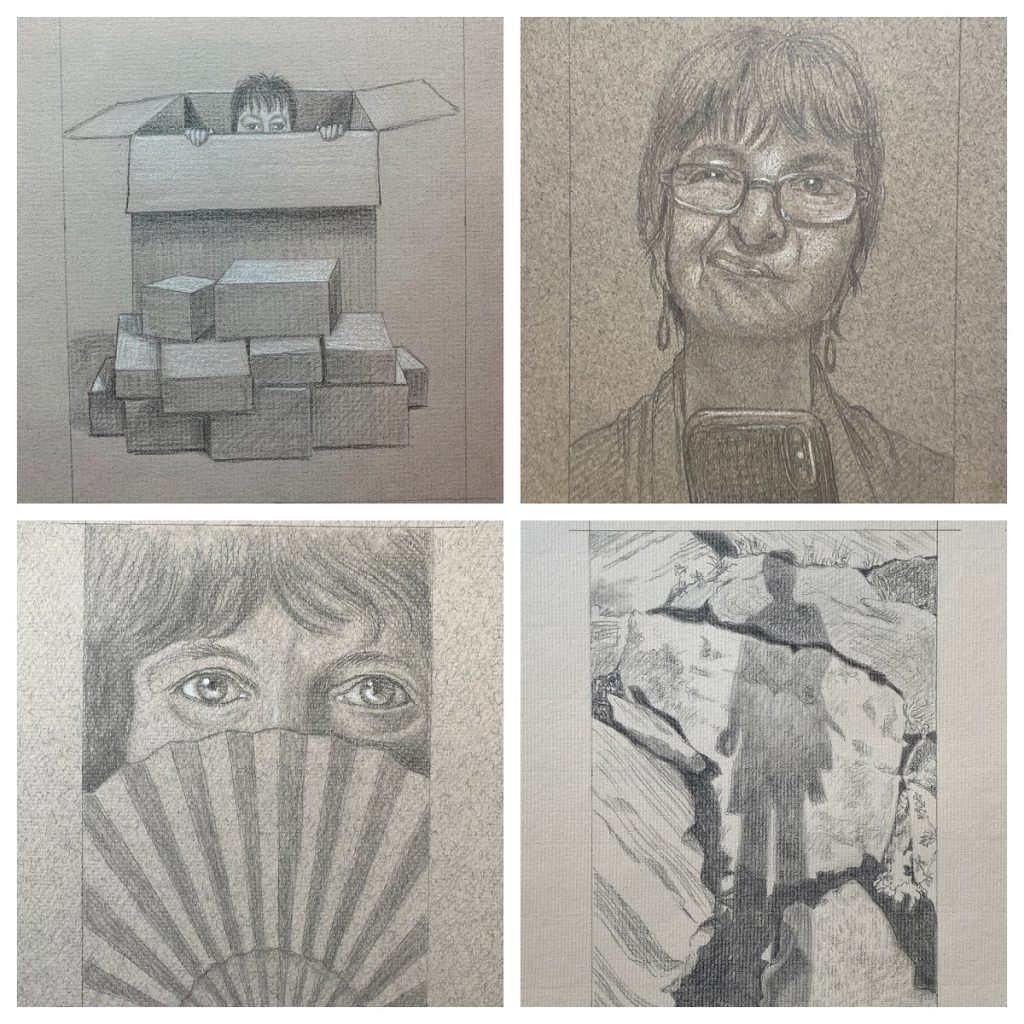
Fran Beallor, four drawings from “A Self-Portrait-a-Day-2020,” a work in progress. Each drawing, pencil on toned paper, 5 by 7 inches
Top: Bonnie Cutts, Too Close (2020), acrylic on canvas, 12 by 12 inches
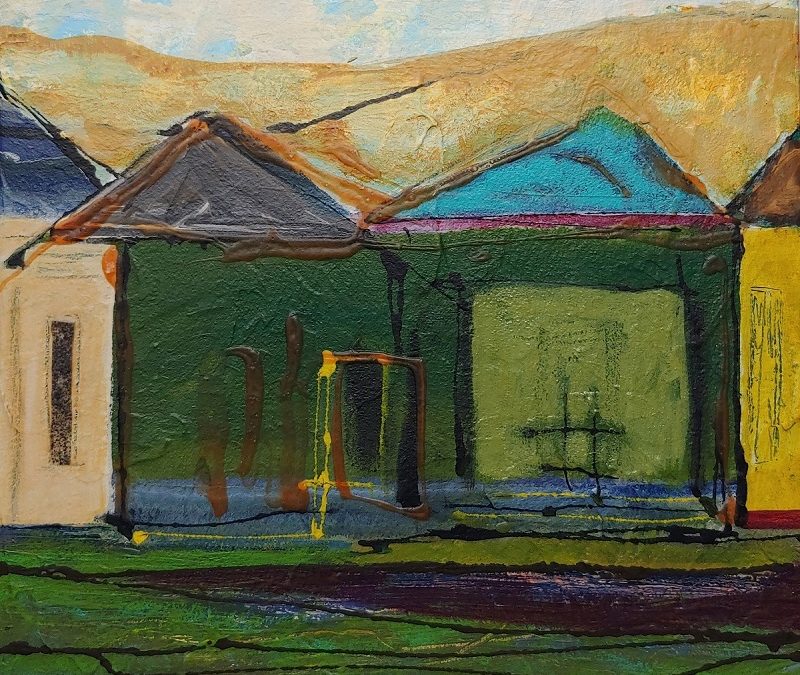

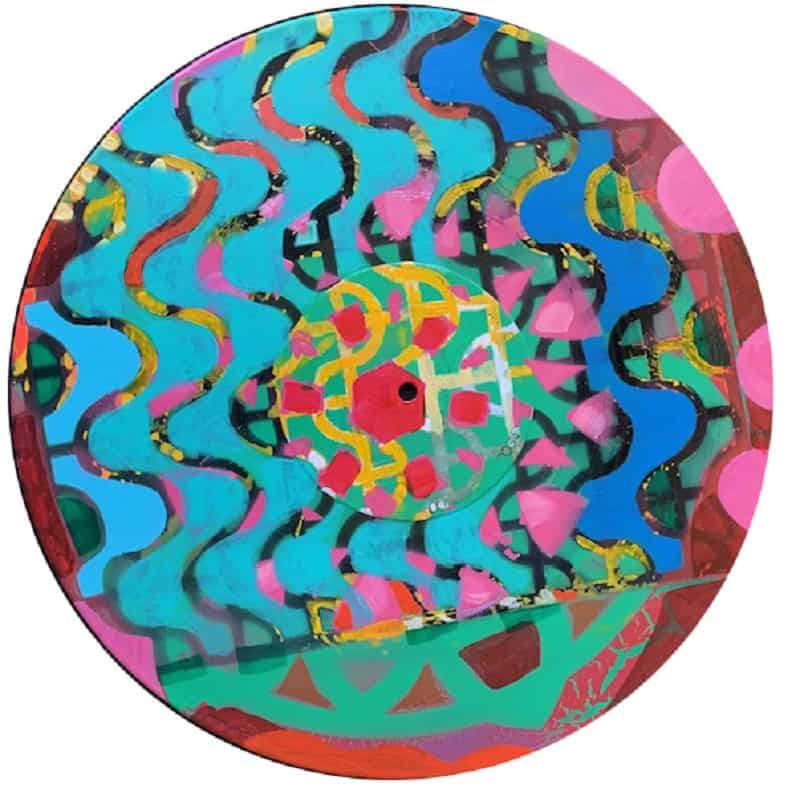
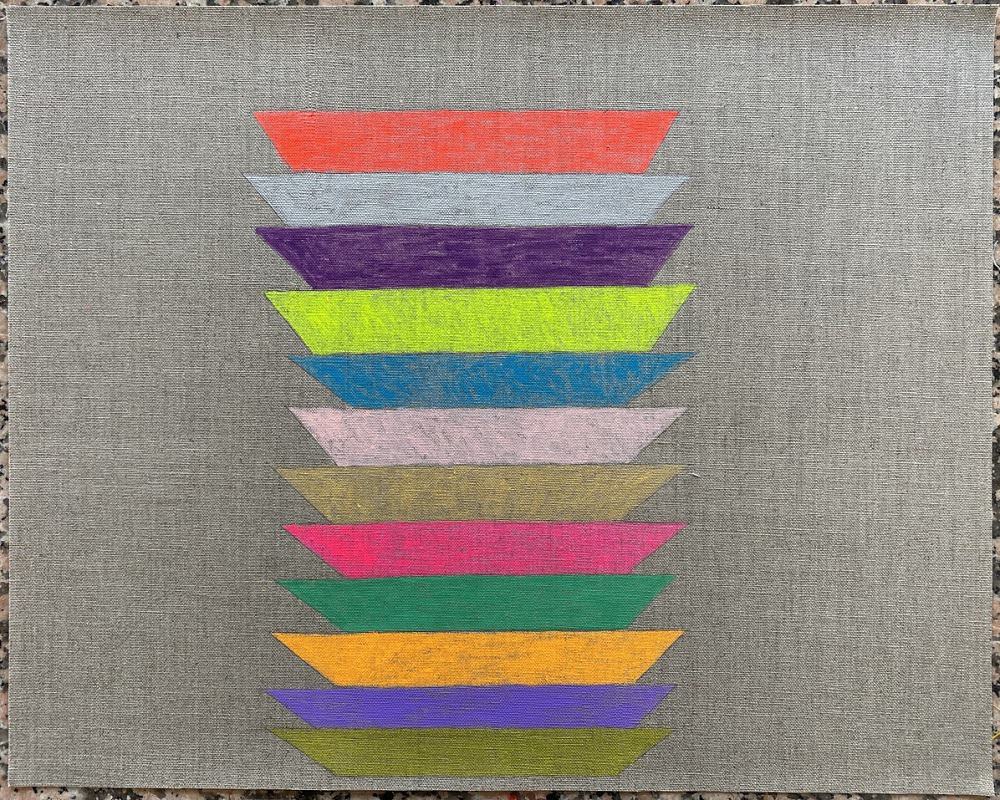
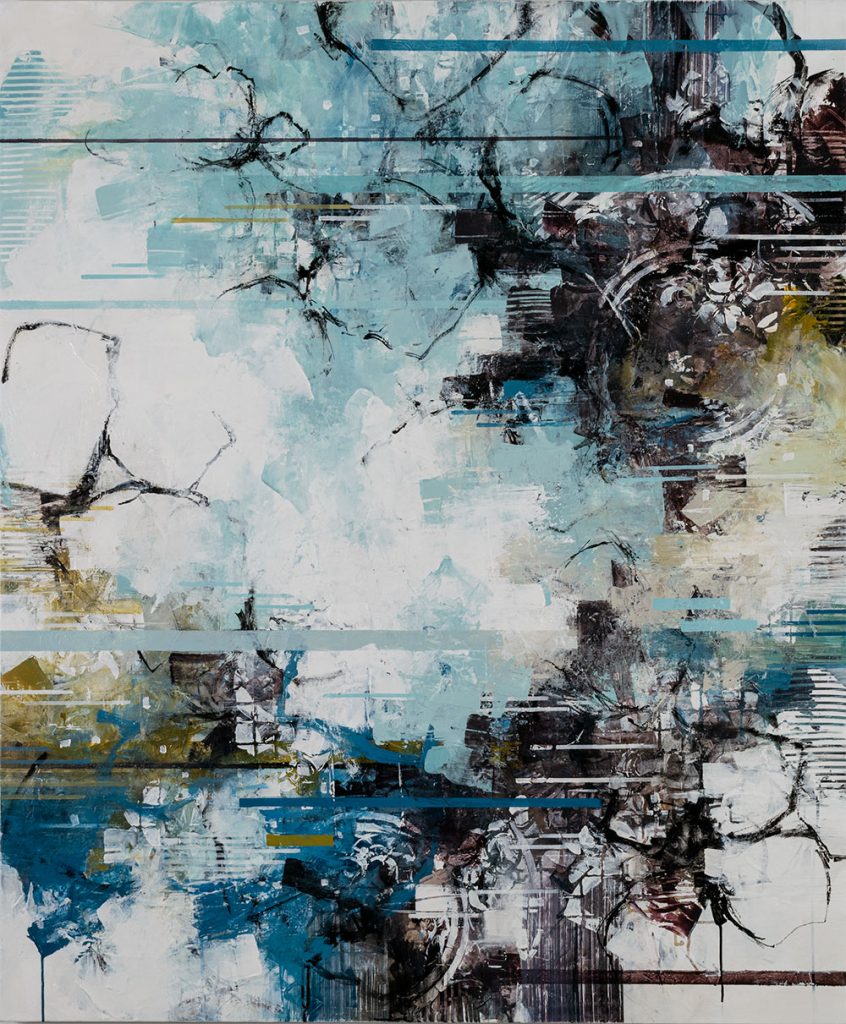
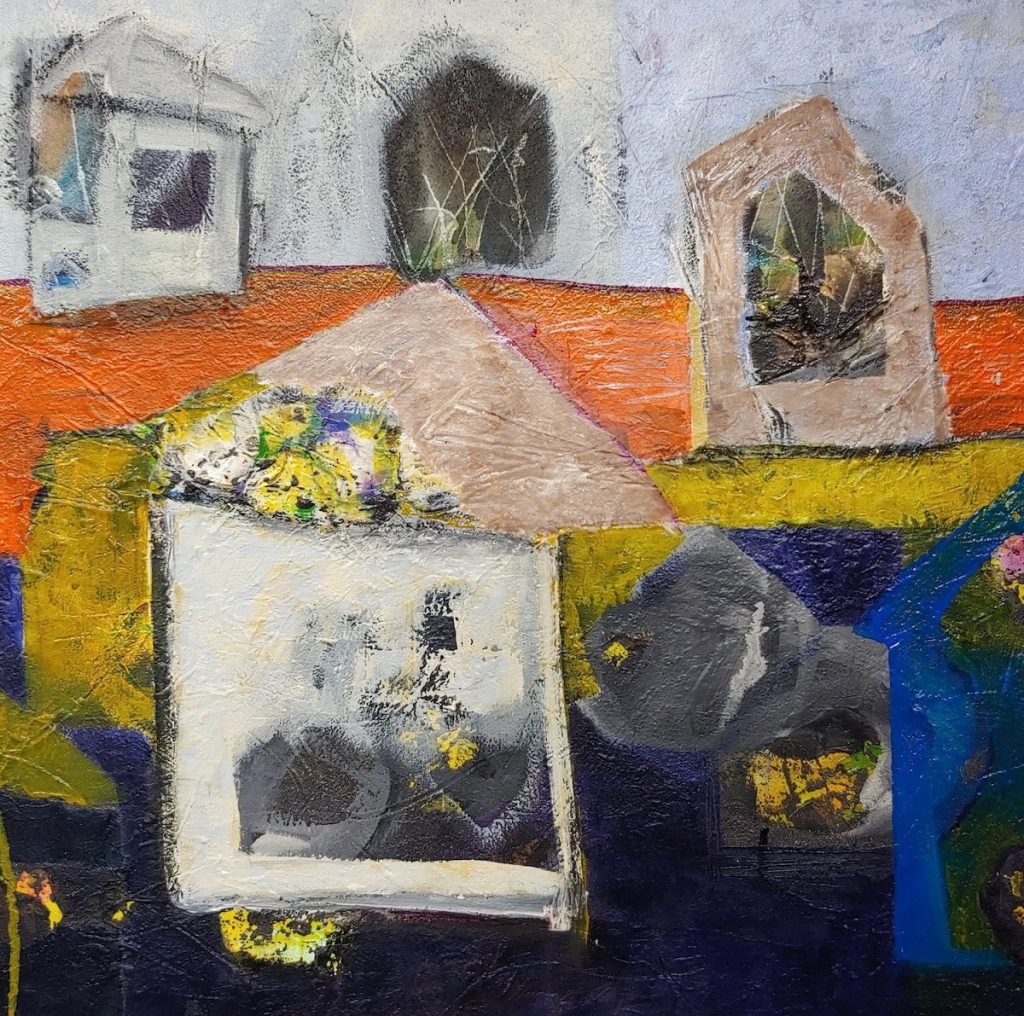
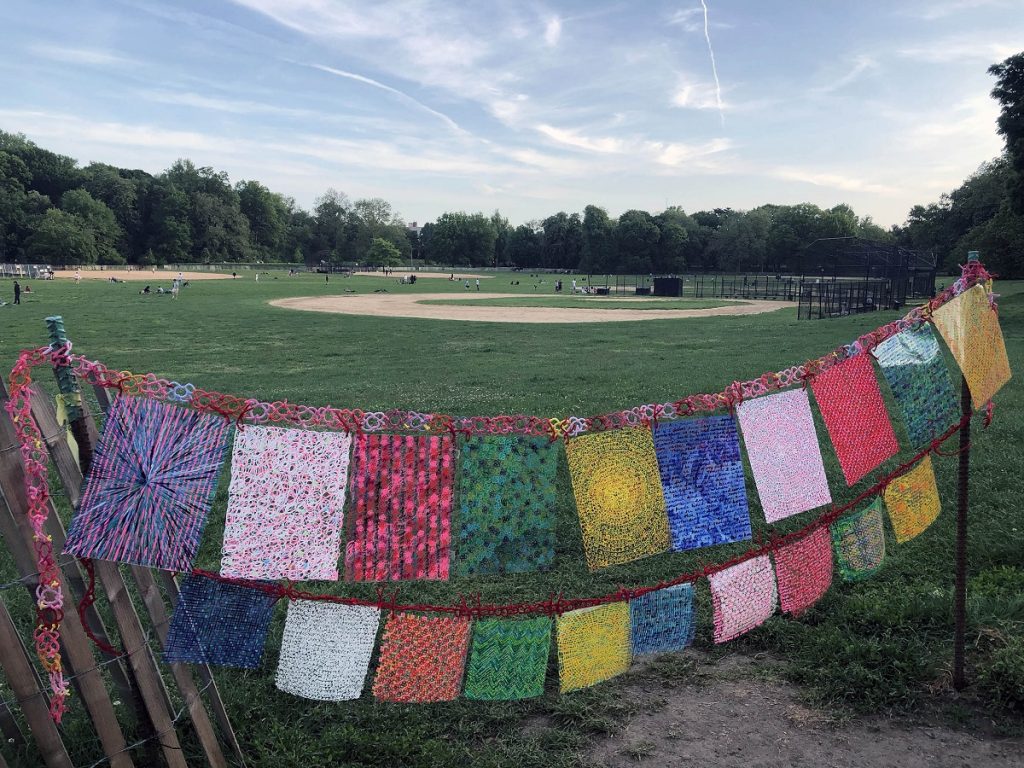
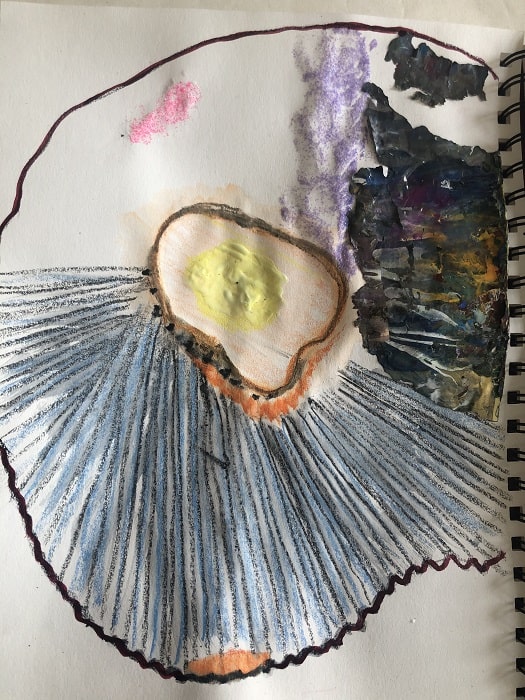
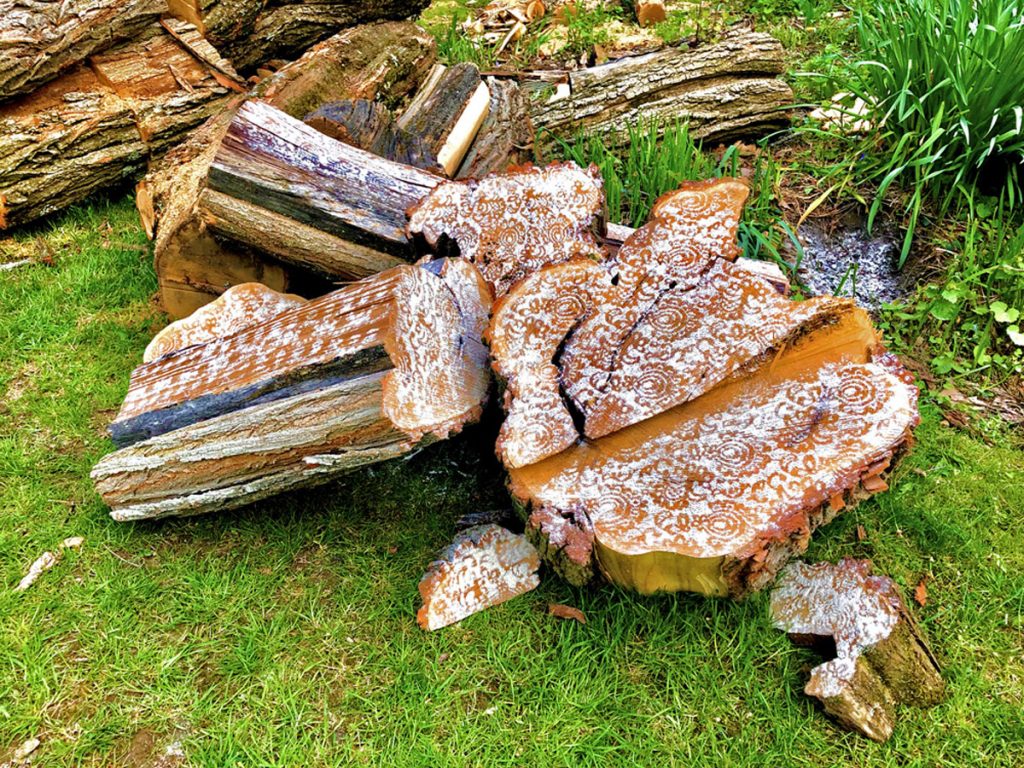
Thanks Ann. xo